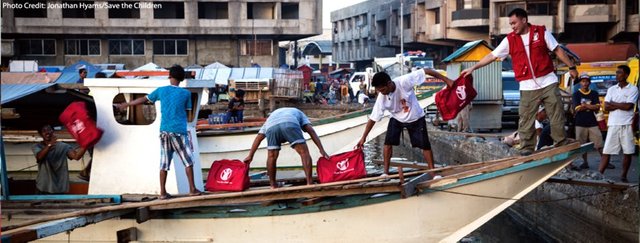
Emergency response has always been at the heart of Save the Children’s mission.
Save the Children is committed to reducing children’s vulnerability to emergencies, ensuring their right to survival and development after an emergency and providing the support they and their families need to quickly recover and re-establish their lives, dignity and livelihoods. The Every One campaign, launched in October 2009, reaffirms the central importance of emergency response in our fight to reduce child mortality.
Our goal is to mount emergency responses that are timely, at appropriate scale and scope, providing high quality programming, efficiently, effectively, safely and securely for the most vulnerable children and their families. Our aim is to increase preparedness of children and their families for emergency situations in the aftermath of natural disasters through child-centred and community-based approaches. We also aim to manage disasters better, minimise the impact of natural disasters to communities in disaster prone areas and build child-centred resilient communities.
Save the Children has put in place an Emergency Preparedness and Response Plan (EPP) to guide all Save the Children employees and implementing partners while preparing for and responding to emergencies.
DISASTER SCENARIO IN INDIA:
India is the most populous democracy in the world, consisting of 28 states and 7 union territories. It has a quasi-federal structure in which the centre and states share financial and decision-making powers, with the centre having overall prominence. Certain areas of India remain highly politically sensitive, including Kashmir, the North-Eastern States, areas of Maoist activity in Bihar, Jharkhand, Chhattisgarh, West Bengal, Orissa and Andhra Pradesh and the refugee camps in Tamil Nadu.
In the event of a large-scale disaster, it is unlikely that the Indian government will call for international assistance. However, the Central and State governments are generally receptive to assistance from international donors, NGOs and the UN in disaster preparedness and response.
We respond immediately to families affected by natural disasters with food aid, water and essential items and also work towards rehabilitation of affected families. We work to ensure that children and their families are better prepared to cope with emergencies and that preparedness programmes at community level are child-centred and community based.
Since 2008, we have reached approximately 98,000 children in 275 villages. We focused on building the leadership among children and enabling their participation in Panchayat-level decision making.
EMERGENCY RESPONSE & CHILD CENTRED DISASTER RISK REDUCTION:
Education: We ensure that children are able to continue with their schooling by providing them with a safe space to learn in the aftermath of disasters.
Child Protection : We distribute relief supplies during emergencies and assist with long term rehabilitation efforts. We operate child friendly spaces supporting children’s psychological needs as well as carrying out nutritional and healthcare assessments. And we protect children from being trafficked for commercial sex work and child labour.
Hi! I am a robot. I just upvoted you! I found similar content that readers might be interested in:
https://www.savethechildren.in/what-we-do/disaster-risk-reduction-a-emergencies
Downvoting a post can decrease pending rewards and make it less visible. Common reasons:
Submit
Sounds like a good Missions project.
Downvoting a post can decrease pending rewards and make it less visible. Common reasons:
Submit
thanks... please support
Downvoting a post can decrease pending rewards and make it less visible. Common reasons:
Submit